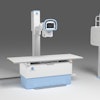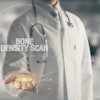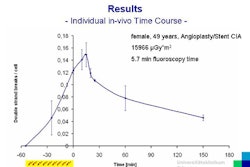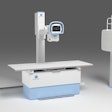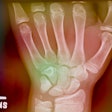Patients with suspected acute coronary syndromes who are discharged after a negative coronary CT angiography (CTA) exam suffer very few cardiac events in the following year, according to a study unveiled today at the Society for Academic Emergency Medicine's (SAEM) annual meeting.
The study, among the first to follow this patient group long-term, tracked patients who underwent CTA after they presented to the hospital with chest pain or other symptoms suggestive of acute coronary syndromes. The study was conducted by researchers from the University of Pennsylvania School of Medicine in Philadelphia.
As for coronary CTA, "we wanted to see if we could get a test that we could consider durable, and it certainly looks like that is the case," said lead investigator Dr. Judd Hollander in an interview with AuntMinnie.com. Hollander is professor and clinical research director at the university's department of emergency medicine.
Chest pain is a common and costly problem in the U.S., where an estimated 6 to 8 million patients present to emergency departments with the condition each year. After wait times averaging 13 hours, only 5% to 15% are found to be actually suffering a heart attack or other coronary disease.
In terms of expenditures, billions of dollars are spent each year on tests and admission of chest pain patients for observation in the traditional care model that includes stress tests and catheterizations. In these individuals, coronary CTA is a promising option for ruling out heart disease, but few studies have looked at how patients fare long-term after a negative CTA exam.
Hollander, along with co-investigator Dr. Harold Litt, Ph.D., and colleagues, started with a cohort of 481 patients with a mean age of 46 years who received negative CTA results, and followed them for a year after their hospital visit. Patients with known cocaine use, cancer, or significant comorbidities were excluded, along with those who had positive CTA results (stenosis ≥ 50% or ejection fraction ≤ 30%).
The researchers also gathered demographic information, medical and cardiac histories, and lab and electrocardiogram results on the cohort undergoing follow-up. The main study outcome was 30-day cardiovascular death or nonfatal myocardial infarction, and patients were followed by telephone and record review for one year, the researchers said.
Imaging was performed on several scanners from Siemens Healthcare of Malvern, PA, including 16-slice (Somatom Sensation 16), 64-slice (Somatom Sensation 64), and dual-source scanners (Somatom Definition). Radiation doses for the mostly retrospectively gated studies ranged from 6-8 mSv down to about 4 mSv for the prospective gating protocols that were initiated for some patients after the study began.
In the year after being discharged with a negative coronary CTA, 10% (n = 42) of patients were rehospitalized and 11% (n = 44) received additional cardiac testing, including stress tests or catheterizations. But none had heart attacks or needed revascularization procedures to open blocked coronary arteries. One patient in the study (0.2%, 95% CI: 0.01%-1.3%) died of unrelated etiology during the year.
With traditional care, "the rate of rehospitalization is considerably higher -- approximately 20% to 30% -- so it does look like if our [CTA] patients come back to the ED, they're less likely to be rehospitalized, and you know their anatomy is normal," Hollander said. "When they get a stress test, patients who come back to the ED even two to three months later will get readmitted."
Earlier research by the group found that CTA was a faster and less expensive way to screen low-risk chest pain patients compared to traditional care. In that study, the cost for patients who received immediate CTA in the emergency department averaged about $1,500, while costs for patients admitted to the hospital for stress testing and telemetry monitoring totaled more than $4,000 for each patient.
The study also showed that CTA helped get patients home faster than traditional tests, with discharge times averaging eight hours versus 24 hours for patients admitted for scheduled testing and monitoring.
Patients presenting to the emergency department with potential acute coronary syndromes who have negative coronary CTA results (< 50% maximal stenosis and ejection fraction > 30%) have a very low likelihood of adverse events over the course of a year, the authors concluded. "The use of this test is a win-win," Hollander said.
CTA's ability to rapidly determine that there is nothing seriously wrong with the patient allows doctors to reassure them and also reduces overcrowding in the emergency department, said Hollander. The CTA protocol, now used routinely at the hospital, has particularly reduced the workload in the observation unit, he added. Data collection will continue as part of an ongoing quality assurance registry for the emergency department.
The research is also morphing into a bigger project -- a randomized controlled trial under the auspices of the American College of Radiology Imaging Network (ACRIN) that is expected to begin within a couple of months.
"We will do a controlled look at one-year outcomes comparing coronary CTA to usual care," Hollander said.
By Eric Barnes
AuntMinnie.com staff writer
May 15, 2009
Coronary CTA allows early triage of patients with acute chest pain, May 11, 2009
Coronary CTA helps identify chest pain patients at low risk, April 24, 2009
Coronary CTA identifies ACS patients ready for ED discharge, December 9, 2008
Coronary CT effective for triage of patients with acute chest pain, November 11, 2008
ACRIN study: Cardiac CTA cheaper, more effective for chest pain triage, October 14, 2008
Copyright © 2009 AuntMinnie.com
